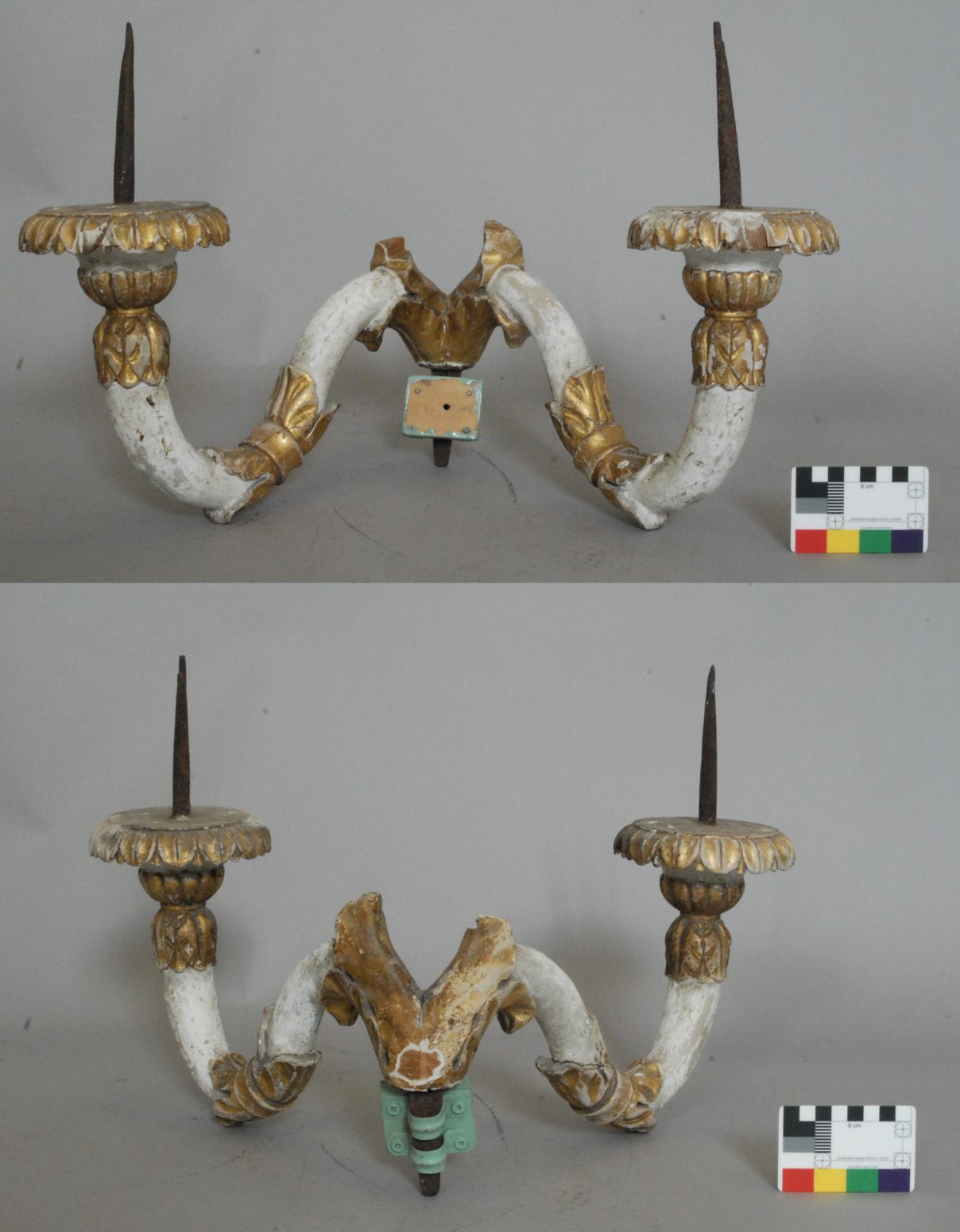December ’21
Gilded Wall Sconce

An 18th century parcel-gilt wall sconce with twin-scroll branches in the Neoclassical (Italian) style. The sconce has carved leaf decoration and pricket candle fittings. Neoclassical design was inspired by the discovery of ancient Pompeii, returning the Greco-Roman style in furniture and architecture.
In the 18th century, rooms were lit using candles, and although the main light source came from chandeliers, additional candles were arranged on the walls using sconces and placed so that the light was reflected from mirrors.
The gilt wall sconce forms part of the collections from Kiplin Hall. The Hall was built in the early 1620s as a hunting lodge by George Calvert, who served as Secretary of State to King James I. He was made Baron Baltimore and was granted the charter to found a colony in America, which would become the state of Maryland. His descendants built the colony and remained owners of Kiplin Hall until 1722.

Christopher Crowe bought the Hall from his son-in-law in 1722. He had made his fortune in Italy and many of the Italian items in the collection came from him. In 1818 Sarah Carpenter (nee Crowe) inherited Kiplin Hall and added the gothic style dining room.
Eventually Kiplin Hall passed to Bridget Talbot, the Hall’s final owner. Bridget supported soldiers on the Italian Front during WW1 and invented a waterproof torch for life-jackets. In 1971 Bridget set up a charitable trust to preserve Kiplin Hall, and this trust still run the Hall today.
Condition
- Evidence of dirt on the surface
- The iron pricket’s show signs of rust
- There are large sections of surface material loss
- A number of areas on the sconce show signs of missing gilding
- There is old wax on the surface
Conservation

Initially the object was lightly vacuumed in order to remove surface dust and dirt and provide a clearer view of the condition. It was revealed that there was a significant amount of wax around the pricket’s and although this shows evidence of use, the surface beneath required cleaning and stabilising so the decision was made to remove it.
The wax was softened using cotton wool swabs with an appropriate solvent, and then removed mechanically using wooden tools. Any areas of wax which could not be removed safely using these methods were left on the surface so as not to damage the sconce underneath.

The iron candle pricket’s showed signs of corrosion on the surface and required stabilising in order to help prevent further corrosion developing in the future. The loose surface corrosion was removed mechanically and then cleaned using an appropriate solvent. Following this, the iron was stabilised using tannic acid treatment and a protective coating was applied.
The painted wood was surface cleaned using cotton wool swabs slightly dampened with deionised water as this removed dirt but did not affect the paint. The gilded surfaces could not be cleaned using deionised water as the sconce had been water gilded. As such the gilding required cleaning using a suitable chemical which successfully removed dirt from the surface without causing damage.

There were a number of areas with significant surface material loss, and the decision was made to replicate these missing areas as there were plenty of examples showing how the missing areas should look. Moulds were made using siligum from existing areas of the sconce, and these were then filled using milliput in order to create the casts. Once cured, these casts were sanded smooth and then adhered to the sconce using an appropriate adhesive. Any small cracks between the cast and the sconce were filled using flügger to disguise the join.
The areas of missing gilding, including the replicated sections were re-gilded using gold leaf. These areas were then slightly distressed and colour matched to the original gilding in order to help the new areas of gilding blend with the original areas of gilding.
Stay tuned for next month’s object!
